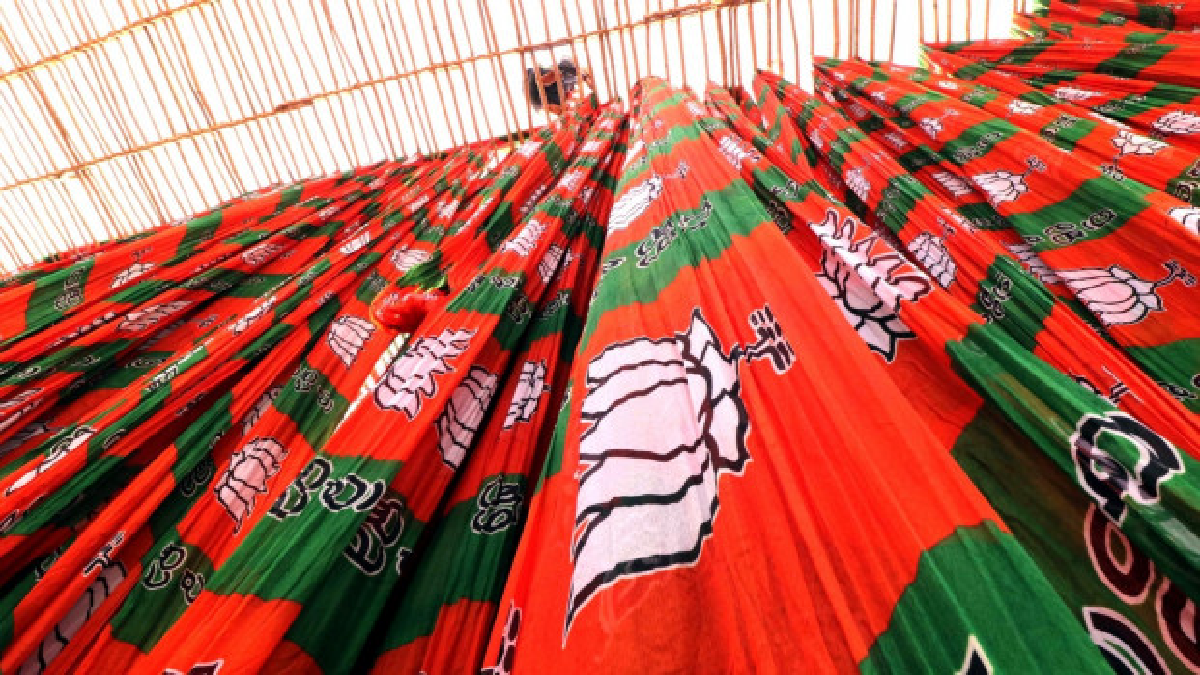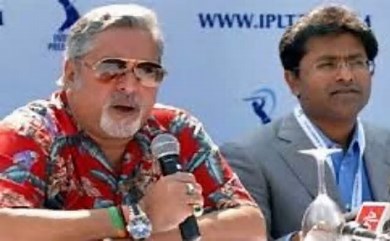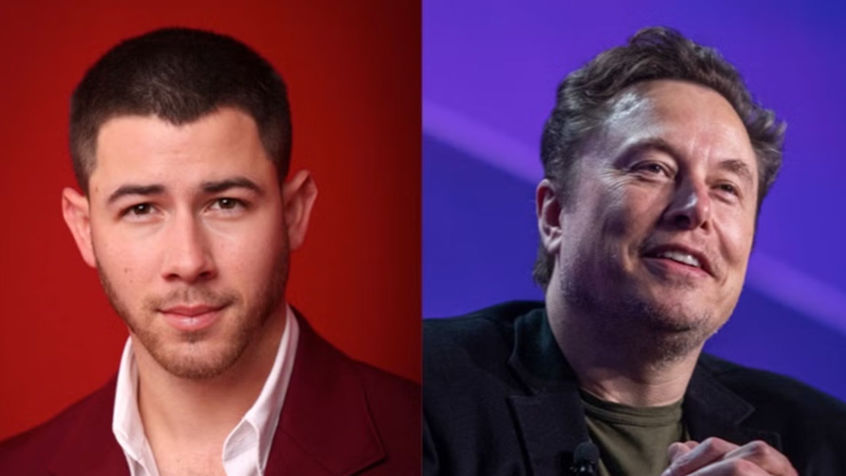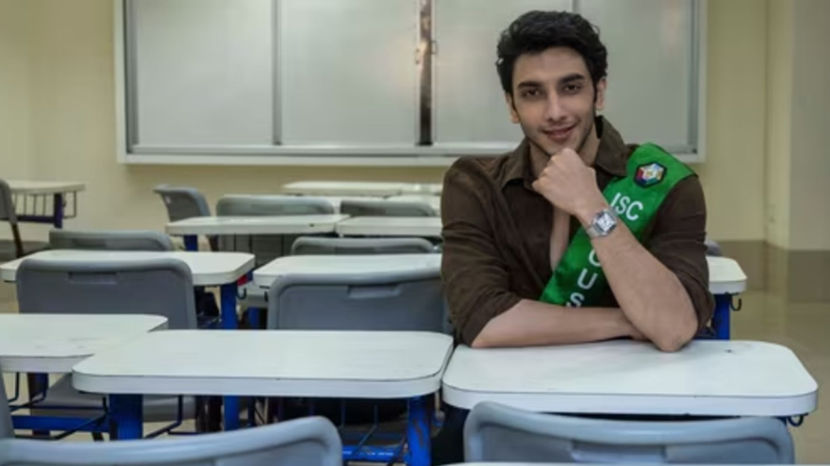
The Bharatiya Janata Party (BJP) contested the West Bengal Assembly election for the first time in 1982. The primary objective of the party was to create a nucleus for a future third force in West Bengal politics. The party contested 52 Assembly constituencies and got around 1,29,994 votes in the state.
From a vote share of 0.58% in the Assembly election in 1982 to over 10.16% in the 2016 Assembly elections, and from 0.4% in the 1984 Lok Sabha elections to over 40% in 2019, the BJP has come a long way in Bengal, laboriously treading on a road mired with thorns of propaganda, bloodshed and violence, losing 130 of its dedicated cadre and over 1,500 still in captivity, embroiled in false cases filed against them by a ruling regime that seems to be getting increasingly insecure by the growing popularity of the saffron party among the masses.
The BJP leadership wanted to rejuvenate the party with fresh faces before the 2016 Assembly elections. The central leadership wanted an organisation man and a new face to take on the TMC. Dilip Ghosh was brought in. He hailed from the Jungle Mahal’s Gopiballavpur.
His predecessor had been hesitant to launch full-scale verbal volleys at the Bengal CM, but Dilip Ghosh did not mince words in his scathing attacks upon Mamata Banerjee and her government. People thought the BJP was reluctant to take the TMC head-on, but Dilip’s arrival changed that perception for good. He took on Mamata right, left and centre. It gave confidence to workers and to voters too.
However, that landed him in situations where he and his convoy were attacked several times by the cadre of the ruling party in Bengal.
Sadly, after Mamata came back to power with an overwhelming majority in 2016, utilising the many attacks on the BJP state president, the BJP was not able to capitalise on plenty of existent issues to launch an aggressive campaign against the TMC. Sambit Pal, in his book The Bengal Conundrum, observes that be it in the May 2018 Panchayat elections or the proposed Rath Yatra in December 2018, the BJP leadership was busier fighting the TMC government in the courts rather than on the streets of Bengal. When the BJP planned five Rath Yatras in December 2018 across the state, culminating in the Modi rally in January 2019 at Kolkata’s Brigade Parade Ground, the TMC refused permission citing law and order issues. The BJP in turn did not aggressively campaign against the Mamata government and instead took the matter to court. Many such incidents exposed the BJP’s lack of organisational capabilities to act as a formidable opposition.
Around this time, the BJP launched the mantra of “win the booths, win the Assembly”. Despite early setbacks, Amit Shah set a target and directed each worker to visit at least 4-5 houses in every booth. The idea was to spread out to around 80,000-odd booths in the state and form a strong organisational net. Over the next year, the BJP recruited around 200 vistaraks for West Bengal.
In the meantime, attacks on BJP karyakartas continued. In Purba Burdwan Kalna district, BJP MP (nominated) George Becker was attacked when he visited the locality to attend a booth vistarak programme. This was not an isolated incident. Women leaders were not spared either—Mahila Morcha president Locket Chatterjee was also attacked in Birbhum district. BJP Yuva Morcha president Debjit Sarkar was arrested during a bandh called by the party against the killing of a school student in Islampur in North Dinajpur. The students and local people were protesting in Islampur against the appointment of an Urdu teacher when they actually needed teachers in other subjects. The boy met his end when the police opened fire on the agitating crowd.
THE BACKEND ARCHITECTS
In 2018, while Ram Lal and Shiv Prakash were already looking at boosting the organisational setup in the state, Amit Shah brought in Arvind Menon as deputy to Kailash Vijaywargiya, who was working as an observer for West Bengal. His job was to help Bengal BJP leaders mobilize grassroots workers and leaders to form booth committees, which was the goal of the national president. He started with North Bengal in 2018 to give a necessary boost to the workers and organisation, mixing with villagers and common people, thereby installing confidence in grassroots BJP workers. Meanwhile, Dilip Ghosh, working closely with strategist and defected TMC leader Mukul Roy, declared that the BJP was ready to take on the TMC in 60% of the areas. The BJP state president stood by the state party leaders and kept reiterating that the BJP was ready to take on Mamata Banerjee.
In 2018, the BJP’s electoral progress and success in the Jungle Mahal districts, especially Jhargram and Purulia, directly reflected the organisational boost. In Jhargram, the BJP bagged the majority of seats among 24 Gram Panchayats and 10 were hung as no party got a majority. In Purulia, the BJP got 10 Zila Parishad seats while the TMC got 25. In the Panchayat Samiti, the BJP was victorious in 142 seats and in Gram Panchayats, they won 644 seats. Mukul Roy can claim credit for this spectacular victory of the saffron camp because he used his sources in the TMC to extract unhappy workers from that party to vote and work for the BJP.
However, in May 2018, two BJP workers were found dead in Purulia in close succession. One of them was Trilochan Mahato, whose body was found hanging from a tree with the following written on his shirt in Bengali: “This is for indulging in politics from such a young age of 18. Been trying to kill you since the vote. Failed. But today you are dead”. This incident shook the state BJP thoroughly. The murder of two BJP workers in a district where the BJP had fared well exposed, on the one hand, their growing political acceptance and strength and, on the other, their inability and weakness in protecting their own cadre from such violence and atrocities.
Amit Shah further brought in the architect of Tripura victory, RSS Pracharak Sunil Deodhar, for a brief period to Bengal to assist Shiv Prakash, Arvind Menon and Kailash Vijaywargiya. The result of these behind-the-scenes architects’ relentless perseverance resulted in extending the party’s organization in a large number of villages and towns before the elections in 2019. From 452 mandal committees in 2015, the BJP reached 1280 in 2019. Setting up 12,407 shakti kendras and appointing 10,266 full-time shakti kendra pramukhs, many BJP district units got new party offices, bringing in much enthusiasm among the grassroots workers.
ROLE OF THE BJP IT CELL
Another organisation that gave the party and its leaders, workers and supporters the much-needed push was the IT Cell. Shiv Prakash brought in Ujjwal Pareek, a Kolkata boy, to head the BJP’s social media team in Bengal. The IT Cell’s job was to operate the “BJP4Bengal” Facebook page as well as its Twitter handle, apart from the 50,000-odd WhatsApp groups. When Mamata Banerjee reacted belligerently to the “Jai Shree Ram” slogan in West Midnapore’s Chandrakona, the IT Cell stitched together a video which asked the question, “Is it a crime to chant Ram’s name in Bengal?”. That video was made viral and it stoked a fire among Bengal’s masses, awakening their dormant Hindu religious sentiments, especially among the youth in the suburbia.
THE RSS ANGLE
The RSS through its shakhas and other social organisations has been able to influence people at the grassroots immensely. RSS activists don’t work directly for candidates but for ideas and issues which align with the RSS-BJP ideology. They form different organisations in different areas, for instance, in Hooghly during the last elections, they formed an outfit called the Hooghly Zila Janakalyan Samiti. This outfit’s job was to distribute leaflets and carry out a door-to-door campaign.
Until a few years ago, the RSS had about 700 shakhas in South Bengal and about 300 in North Bengal, but the figure went up in South Bengal to 1200 and to 400 in North Bengal by 2018.
It is the RSS which helped to capture and consolidate the Matua vote for the BJP before the 2019 elections, closely working with the Matua community and organising “mochchab” every fortnight. A “mochchab” is a community programme where members of the community socialise and share a meal together. The RSS used these informal meetings to discuss the NRC and Citizenship Bill/Act to gain the confidence of the community in favour of the saffron camp. Sambit Pal mentions in The Bengal Conundrum how, apart from organising mochchabs, the RSS also kept working with frontal organisations like the Vanavasi Kalyan Ashram which works in tribal areas running hostels and schools like Ekal Vidyalaya and involving people in social activities, mass marriages, etc. The VKA did not directly participate in BJP politics but their social influence helped BJP gain popularity and credibility among tribal and backward populations in North Bengal. Other organisations like the Sree Hari Satsang Samiti helped the BJP make headway through the RSS activities without much publicity and politicking.
The Sangh outfits were also like a protective umbrella, always standing in support of Hindu groups whenever there were communal clashes in the state. Saffron flags in minority-dominated remote villages showed how these organisations helped to turn the story around for the BJP and also mobilised Hindu voters across suburban and rural Bengal, observes Pal.
With every by election in West Bengal since 2016, the BJP has gained in vote shares at the cost of the Left front. This vote shift peaked in the 2019 Lok Sabha election with the BJP winning 18 out of 42 seats. The BJP’s vote share shot from 10% in 2016 to over 40% in 2019, with the Left’s vote share declining from 27% to 7.5%, the Congress’s share collapsing by 7% and the TMC falling by 2%. In numbers, roughly 1 crore voters seem to have shifted their allegiance from the Left towards the BJP.
Dibyojyoti Basu, a senior journalist, opines that the main reason for the BJP’s rise in Bengal is the tyrannical nature of the Mamata Banerjee government. “Extortion and Chanda Raj are back with a bang in Bengal, much to the consternation of businessmen, commoners and the overall hoi polloi. People are disgusted with the misrule. Thus the cry for change,” he says.
TMC’S MINORITY APPEASEMENT POLITICS
Excessive minority appeasement by the TMC has also driven the Hindu voters away from it and towards the BJP. Once in power, Mamata Banerjee rolled out several Muslim-specific policies such as granting an allowance or stipend to imams and muezzins, extending scholarships to Muslim students of Class I to X, offering reservation to Muslim OBCs, banning the telecast of a drama series by controversial author Taslima Nasrin on the demand of conservative Muslim clerics, and making Urdu the second official language in districts where the Urdu-speaking population was more than 10%.
The Mamata government also gave a grant of Rs 300 crore to the Aaliah University, which was started during the Left front’s rule, and constructed special hostels for Muslim girls in districts.
Additionally, Mamata Banerjee increased the number of tickets given to Muslims in the Bengal Assembly elections. She covered her head and attended prayers in mosques, mixed Arabic words with Bangla in public meetings, roped in influential urbane Urdu-speaking Muslims and also gave more weightage to Urdu-speaking Muslims in her cabinet as compared to the previous Left government.
This kind of blatant appeasement of minorities has not augured well with most Bengali Hindus. Dibyojyoti Basu adds, “For the sake of Muharram processions the Mamata government postponed the Durga Puja immersion ceremony. The chief minister had also in the recent past objected to Ram Navami celebrations in Bengal.”
Dr Jayanta Gupta, a renowned gynaecologist in Kolkata, says that the TMC has resorted to minority appeasement to expand its vote base without any particular vision for the overall development of the state. The dole-outs have multiplied in 2021 keeping the election in mind, with Maa Canteen serving egg curry and rice for Rs 5, the Swasthya Saathi Card that promises treatment at government and private hospitals at shockingly unrealistic subsidies (no wonder the card is being turned down by most hospitals), financial grants to “paara” clubs (local clubs) working under the TMC banner at the expense of taxpayers’ money, etc.
Rampant corruption unleashed by the ruling party and widespread unemployment are also part of the cancer that is rapidly eroding Bengali society and unabashedly exposing the can of worms that the TMC has opened, resulting in the Bengalis’ patience wearing thin. The citizens of this state are now looking for change and the BJP with its pragmatic vision and nationalistic tone is increasingly finding a place among the masses, Gupta says.
What further adds to the BJP’s armoury is rampant corruption and widespread unemployment in the state, along with the widespread anger among the Matua community for being stateless and homeless in India for so many decades. The recently passed Citizenship Bill actually fulfils the Matua demand and hence gives the BJP a strong support base in the region. To add to Mamata’s worry is growing claimants for Muslim votes in the state—from AIMIM MP Asaduddin Owaisi to the Indian Secular Front is backed by Islamic cleric Pirzada Abbas Siddiqui.
CONCLUSION
If several opinion polls are to be believed, it will be a neck-and-neck contest between the TMC and the BJP. It is already showing signs of going down to the wires for both the camps. It remains to be seen how the BJP will further galvanise public opinion against the ruling regime, now that the CBI enquiry into various scams has engulfed the Chief Minister’s nephew, Abhishek Bandopadhyay, and his wife, Rujira Narula.
The road to Nabanna still remains an uphill climb for the BJP because the steepest peaks will unravel themselves now that the election schedule has been announced by the Election Commission.
The writer is founder and editor-in-chief of Tribe Tomorrow Network. The views expressed are personal.















